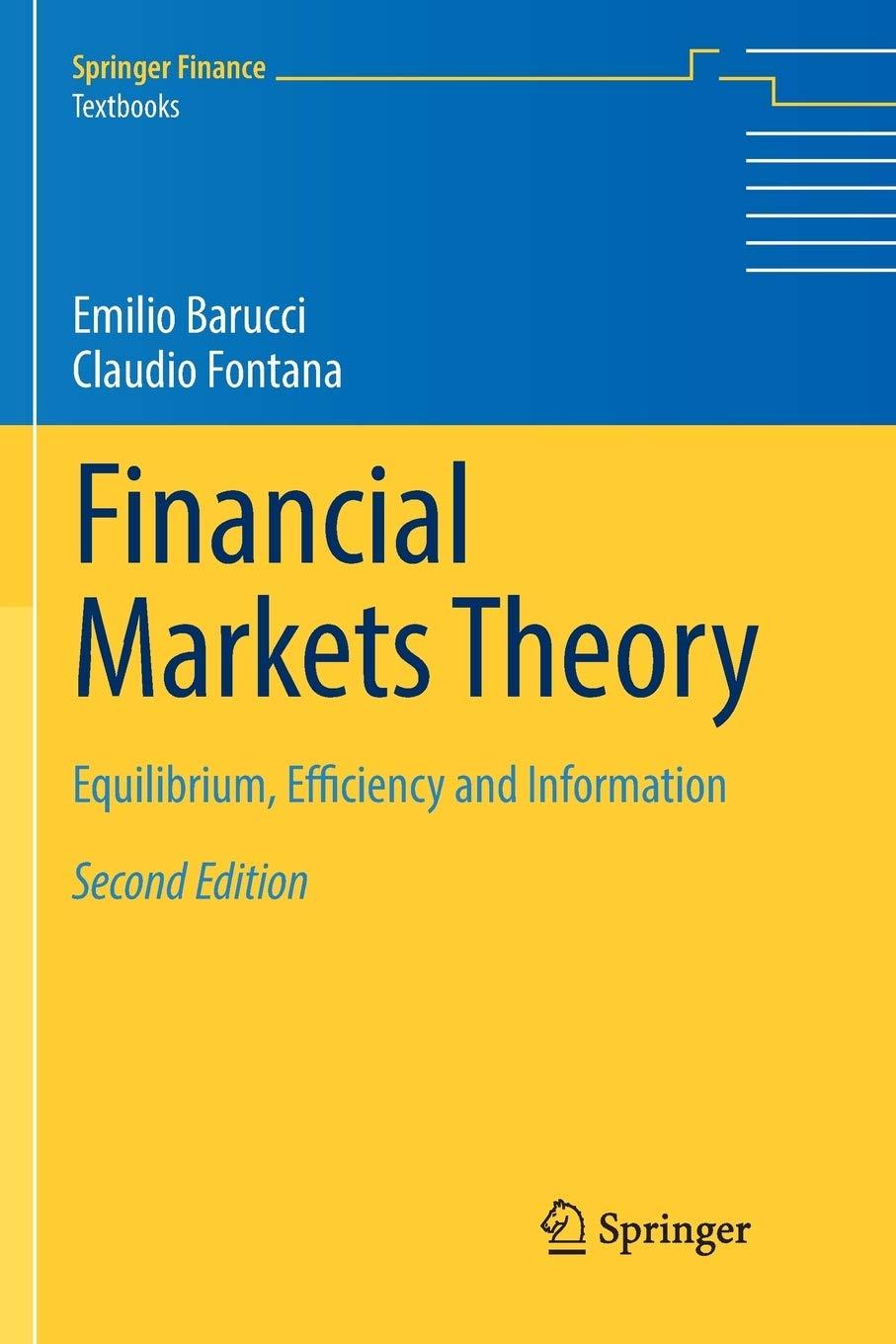Consider an economy with two possible states of the world and two agents (a) and (b), with
Question:
Consider an economy with two possible states of the world and two agents \(a\) and \(b\), with homogeneous beliefs \((\pi, 1-\pi)\) about the realization of the state of the world and utility functions \(u(x)=\sqrt{x}\) defined on consumption at time \(t=1\). Let \(p_{1}\) and \(p_{2}\) denote the prices of the two Arrow securities paying one unit of the consumption good in correspondence of each state of the world and let \(\left(e_{1}^{i}, e_{2}^{i}\right)\) denote the endowment of agent \(i\), for \(i \in\{a, b\}\), in terms of the two contingent consumption goods.
(i) Determine the equilibrium allocation when the agents' endowments are given by \(\left(e_{1}^{a}, e_{2}^{a}\right)=(40,60)\) and \(\left(e_{1}^{b}, e_{2}^{b}\right)=(60,40)\).
(ii) Determine the equilibrium allocation when the agents' endowments are given by \(\left(e_{1}^{a}, e_{2}^{a}\right)=(40,60)\) and \(\left(e_{1}^{b}, e_{2}^{b}\right)=(50,50)\).
(iii) How does the equilibrium allocation change if the agents have heterogeneous beliefs such that \(\pi^{a}>\pi^{b}\) ?
(iv) Determine the equilibrium allocation in the case of a logarithmic utility function \(u(x)=\log (x)\).
Step by Step Answer:

Financial Markets Theory Equilibrium Efficiency And Information
ISBN: 9781447174042
2nd Edition
Authors: Emilio Barucci, Claudio Fontana





